Buying a used sewing machine is a smart choice for budget-conscious sewers and craft enthusiasts seeking quality without breaking the bank.
Whether you’re a beginner looking to explore your sewing skills or a seasoned pro in search of a reliable backup machine, the process of acquiring a pre-owned sewing machine requires careful consideration.
This guide will provide you with a comprehensive roadmap for making a successful purchase.
From determining your sewing needs and conducting thorough research to inspecting the machine and negotiating the price, each step is designed to ensure you find a used sewing machine that not only fits your budget but also meets your sewing requirements.
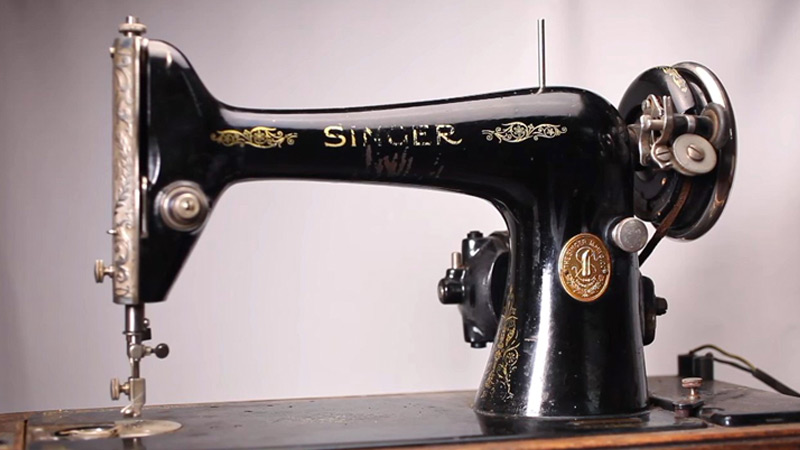
10 Factors to Consider When Buying a Used Sewing Machine
Buying a used sewing machine can be a cost-effective way to acquire a quality sewing machine while staying within your budget.
However, it’s important to do your research and take certain precautions to ensure that you’re making a wise investment.
Here are the things you should consider before buying a used sewing machine:
1. Determine Your Sewing Needs

Before you start searching for a used sewing machine, take some time to assess your sewing needs.
Consider the following:
- Type of Sewing: Determine what kind of sewing projects you plan to undertake. Are you primarily interested in basic garment sewing, quilting, embroidery, or more specialized tasks? Knowing your specific requirements will help you choose the right type of sewing machine.
- Features: Make a list of the features you need in a sewing machine. For instance, do you require adjustable stitch length and width, a variety of presser feet, automatic buttonholing, or the ability to handle heavy fabrics? Understanding your feature priorities will help you narrow down your options.
2. Research Sewing Machine Brands and Models
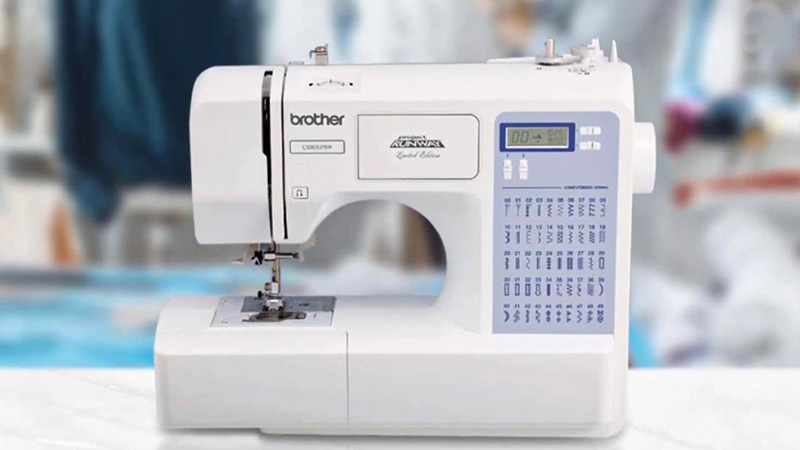
Investigate different sewing machine brands and models to find one that suits your needs.
Consider factors like:
- Brand Reputation: Look for well-established brands known for producing reliable and durable machines. Brands like Singer, Brother, Janome, and Pfaff are often trusted by sewers.
- Model Comparisons: Compare different models within a brand to find the one that matches your requirements. Some models are designed specifically for beginners, while others cater to more advanced sewers.
- User Reviews: Read reviews and testimonials from experienced sewers to get insights into the performance and reliability of specific models. Online forums and sewing communities can be valuable resources for this information.
3. Set a Budget
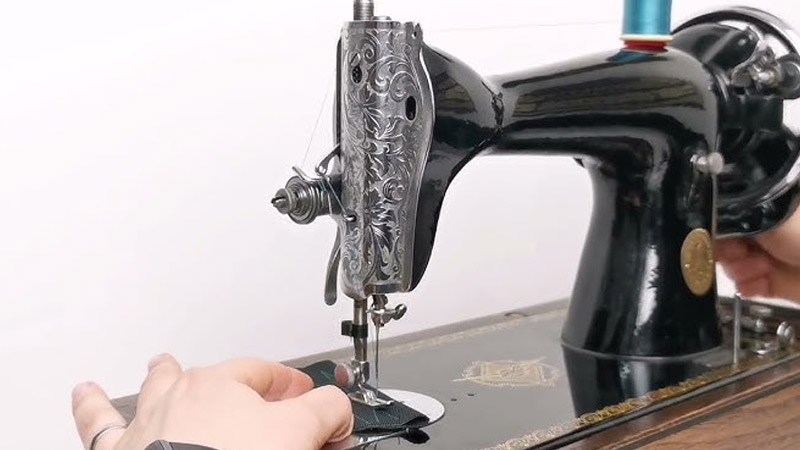
Determine a budget that aligns with your financial capabilities. Keep in mind that used sewing machines can vary widely in price, so having a budget will help you focus your search and prevent overspending.
4. Where to Find Used Sewing Machines
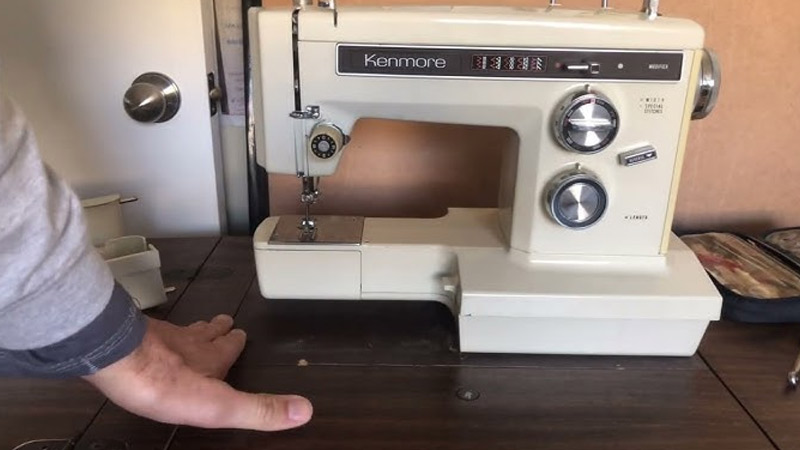
Consider the following places to find used sewing machines:
- Online Marketplaces: Websites like eBay, Craigslist, and Facebook Marketplace offer a wide range of used sewing machines. These platforms allow you to search for machines based on your budget and location.
- Sewing Machine Dealers: Local sewing machine dealerships sometimes sell used machines. These machines may have been refurbished and often come with warranties or service guarantees.
- Sewing Machine Repair Shops: Sewing machine repair shops occasionally sell used machines that they have serviced and restored. These machines are usually in good working condition and may come with maintenance records.
- Sewing and Quilting Clubs: Joining local sewing or quilting clubs can be a great way to network with fellow sewers. Some club members may be looking to sell their used machines, and this can be an excellent way to find a machine with a known history.
5. Inspect the Machine
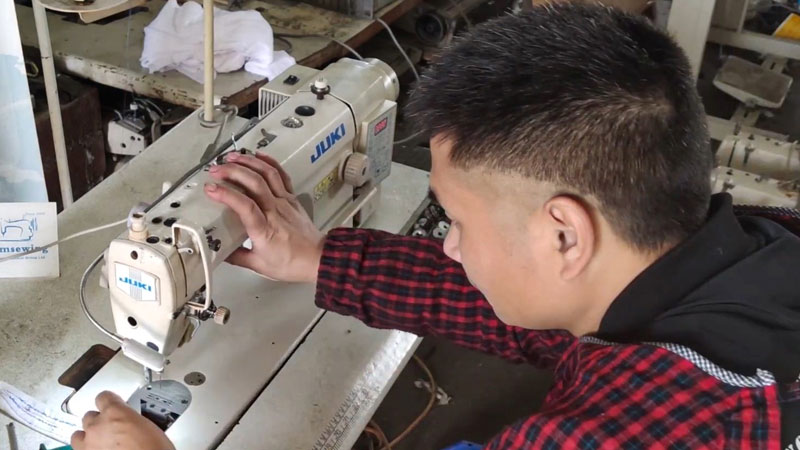
When you find a used sewing machine that interests you, it’s essential to thoroughly inspect it:
- Physical Condition: Examine the machine for any signs of wear, rust, or damage to the exterior. A well-maintained machine will have fewer cosmetic issues.
- Functionality: Ask the seller to demonstrate the machine’s basic functions, such as stitching, threading, and bobbin winding. Listen for any unusual noises or vibrations while the machine is in operation.
- Accessories: Inquire about the accessories and attachments included with the machine. Having a variety of presser feet, bobbins, and a user manual can be valuable.
- Maintenance History: If available, ask the seller about the machine’s maintenance history. Machines that have been regularly serviced are more likely to be in good working condition.
6. Negotiate the Price
When negotiating the price with the seller, consider the following:
- Machine Condition: If you identify any issues during the inspection, use them as leverage for price negotiation. Be fair but firm in your negotiations.
- Market Research: Use your research on similar models and their prices to ensure you’re getting a reasonable deal. Don’t be afraid to haggle, but also be prepared to walk away if the price doesn’t meet your budget.
7. Test the Machine
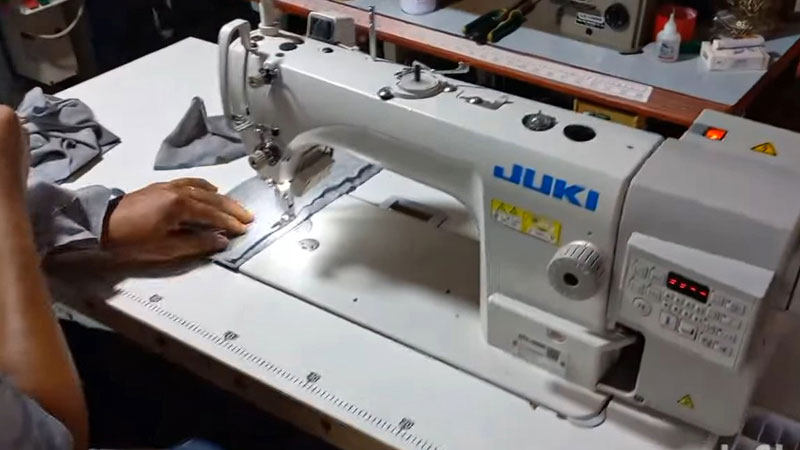
Whenever possible, sew a few stitches on the machine to ensure it operates smoothly and produces even stitches.
Pay attention to the following:
- Tension: Check that the machine’s tension settings can be adjusted and that the stitches are balanced.
- Stitch Length and Width: Test the machine’s ability to control stitch length and width as needed for your projects.
- Foot Pedal Response: Ensure the foot pedal responds smoothly and consistently to your control.
8. Check for Documentation
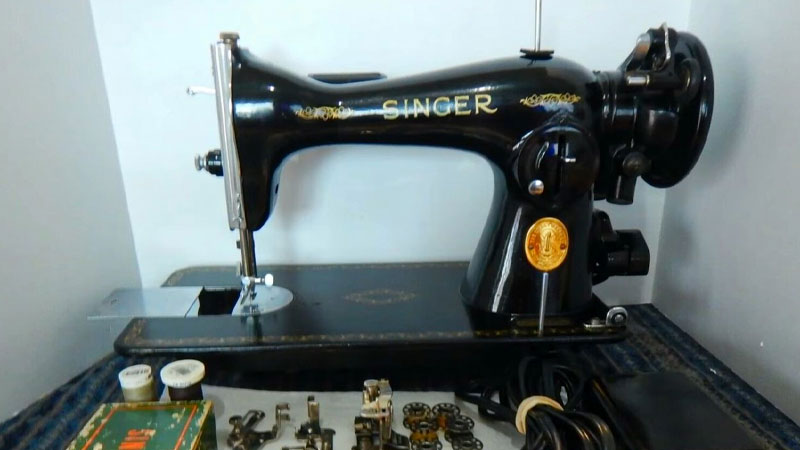
Ask the seller for any available documentation:
- User Manual: The original user manual can be a valuable resource for understanding your machine’s features and troubleshooting common issues.
- Maintenance Records: Any records of past maintenance or repairs can give you confidence in the machine’s condition.
9. Warranty or Return Policy
Inquire about any warranty or return policy offered by the seller:
- Warranty: Some sellers may provide a limited warranty on used machines, offering you peace of mind in case of unexpected issues.
- Return Policy: Understand the seller’s return policy in case the machine doesn’t meet your expectations or if you encounter problems shortly after the purchase.
10. Finalize the Purchase
Once you’re satisfied with the machine’s condition and price, finalize the purchase by obtaining a written receipt from the seller that includes the date, price, and any warranties or guarantees. This document serves as proof of your purchase.
Qualities to Seek in a Used Sewing Machine
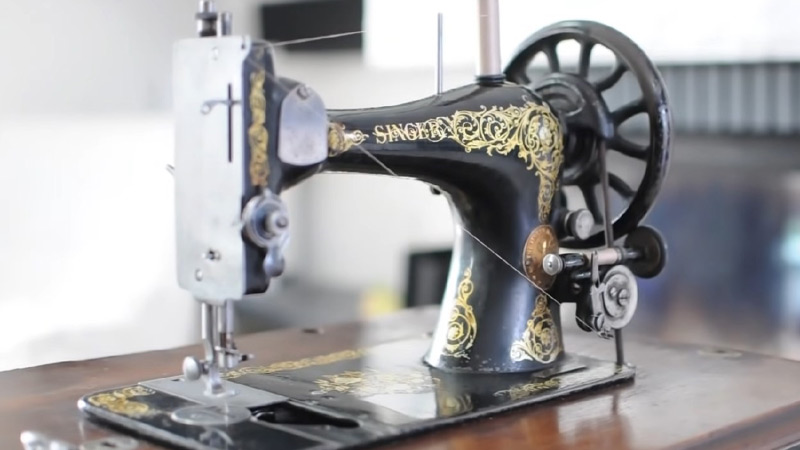
When in the market for a used sewing machine, it’s crucial to know which qualities to seek to ensure you get a top-notch piece of equipment that meets your needs.
Here are the key attributes to consider:
Durability and Build Quality
Look for a sewing machine with a sturdy, metal frame. These machines tend to be more durable and long-lasting than those with plastic components. A well-built machine is less likely to develop issues over time.
Stitch Quality
The quality of stitches is a critical factor. Test the machine to ensure it produces even and consistent stitches in various fabrics and stitch types. Uneven or skipped stitches may indicate underlying problems.
Variety of Stitches
A top-notch sewing machine offers a range of stitch options, including straight, zigzag, buttonhole, and decorative stitches. This versatility allows you to tackle a wide array of sewing projects.
Adjustability
Seek a machine with adjustable settings for stitch length and width, thread tension, and presser foot pressure. Having control over these parameters enables you to tailor your sewing to different fabrics and techniques.
Accessories and Attachments
Check for included accessories like multiple presser feet, extra bobbins, and a seam ripper. These accessories can expand your sewing capabilities and save you money on additional purchases.
Threading and Bobbin System
A user-friendly threading system and easy-to-load bobbin are essential for hassle-free sewing. Machines with automatic needle threaders can be particularly convenient.
Motor Power
The machine’s motor should have sufficient power to handle the fabrics you plan to sew. A strong motor ensures smooth stitching through thick materials.
Noise Level
While sewing machines will make some noise, a quieter machine can be more pleasant to work with, especially for extended sewing sessions.
Portability
Consider your sewing space and whether you need a machine that’s easy to move around. Smaller, portable machines can be a great choice for those with limited space.
Brand Reputation
Research the brand’s reputation for quality and customer support. Well-established brands often have better availability of parts and customer service.
Maintenance Records
If possible, inquire about the machine’s maintenance history. A machine that has been regularly serviced and well-cared for is more likely to be in excellent condition.
Price and Value
Finally, assess the price in relation to the machine’s features and condition. While a lower price may be attractive, ensure that you’re getting good value for the quality and capabilities offered.
Tips to Maintain a Used Sewing Machine
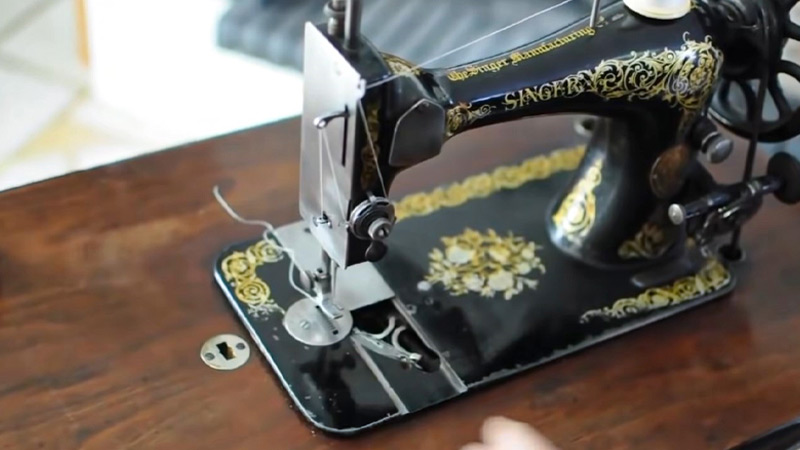
Maintaining a used sewing machine is essential to ensure it continues to operate smoothly and reliably.
Here are some tips to help you keep your used sewing machine in good condition:
Read the User Manual
Start by thoroughly reading the user manual that comes with your sewing machine. It contains valuable information about proper use, maintenance, and troubleshooting specific to your machine’s make and model.
Clean the Machine Regularly
After each sewing session, remove lint, dust, and fabric scraps from the machine. Use a soft brush or a lint brush to clean the feed dogs, bobbin area, and any other accessible parts. Compressed air can also help remove debris from hard-to-reach areas.
Change Needles and Bobbins
Replace sewing machine needles regularly, as dull or damaged needles can cause stitching problems. Additionally, use high-quality, appropriate bobbins for your machine to ensure smooth bobbin winding and stitch formation.
Oil the Machine as Needed
Consult your user manual to determine the recommended oiling schedule for your machine. Apply sewing machine oil to the designated points, but avoid over-oiling, as excess oil can attract more lint and dirt.
Check and Adjust Tension
Keep an eye on thread tension settings. If you notice irregular stitches or tension issues, refer to your manual for guidance on adjusting the upper and lower thread tensions.
Clean and Oil the Bobbin Case
Remove the bobbin case and clean it regularly. If your machine’s bobbin case is removable, follow the manufacturer’s instructions for cleaning and oiling it.
Replace or Clean the Presser Feet
Depending on your sewing frequency and the types of fabric you work with, presser feet can become dirty or worn. Replace or clean them as needed to ensure they provide proper fabric handling.
Keep It Covered
When not in use, cover your sewing machine with a dust cover or store it in a case to protect it from dust and sunlight, which can cause the machine to yellow or age prematurely.
Service and Maintenance
Consider having your sewing machine professionally serviced annually or as recommended in your user manual. Experienced technicians can clean, lubricate, and make adjustments to keep your machine in optimal condition.
Store It Properly
If you plan to store your sewing machine for an extended period, remove the needle and any thread from the machine. Store it in a cool, dry place away from direct sunlight and extreme temperatures.
Use High-Quality Thread
Using good-quality thread can reduce lint buildup in your machine. Cheap or low-quality thread can break more easily and leave behind residue.
Practice Safe Handling
Handle your sewing machine with care, and avoid forcing fabric through the machine. If you encounter resistance, stop and investigate the issue to prevent potential damage.
FAQS
Can I Trade-In My Old Sewing Machine for a Used One?
Yes, some sewing machine dealerships offer trade-in programs where you can exchange your old sewing machine for credit toward the purchase of a used one.
Are Vintage Sewing Machines a Good Option for Beginners?
Vintage sewing machines can be a great option for experienced sewers but might not be ideal for beginners who may benefit from more user-friendly, contemporary models.
Can I Upgrade a Used Sewing Machine with Additional Features?
Yes, in some cases, you can upgrade a used sewing machine with additional features or accessories.
To Recap
Purchasing a used sewing machine can be a rewarding endeavor when approached with diligence and careful consideration.
By defining your sewing needs, researching reputable brands, setting a budget, and exploring various sources, you can uncover a hidden gem that aligns perfectly with your creative aspirations.
The inspection process is crucial, allowing you to assess the machine’s condition, functionality, and included accessories.
Effective negotiation ensures you secure a fair deal, while testing the machine guarantees its reliability. Furthermore, documentation and warranty inquiries offer added peace of mind.
Ultimately, a well-informed and meticulous approach to buying a used sewing machine not only saves you money but also opens up endless possibilities for your sewing projects, fostering your passion for crafting and creativity.
Leave a Reply